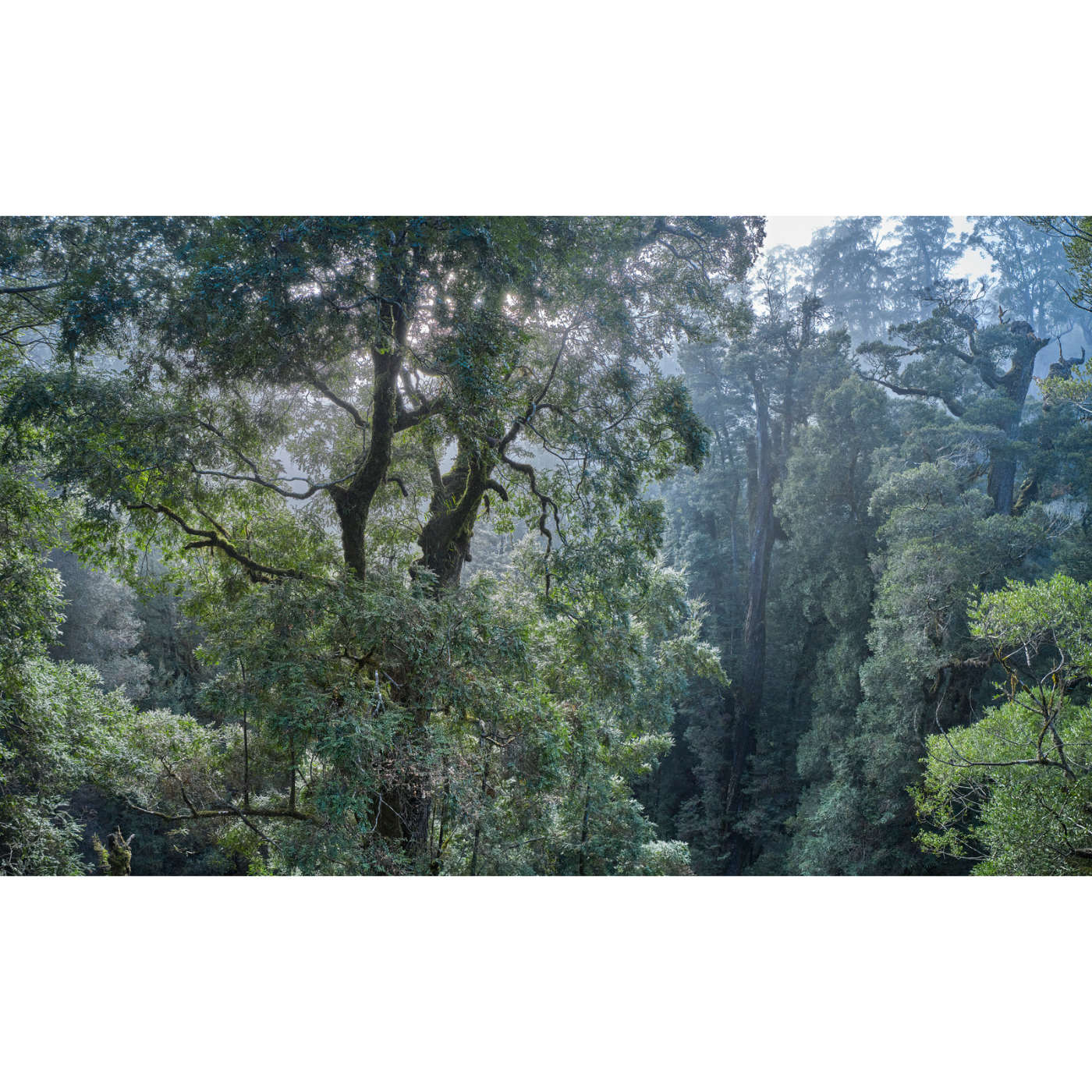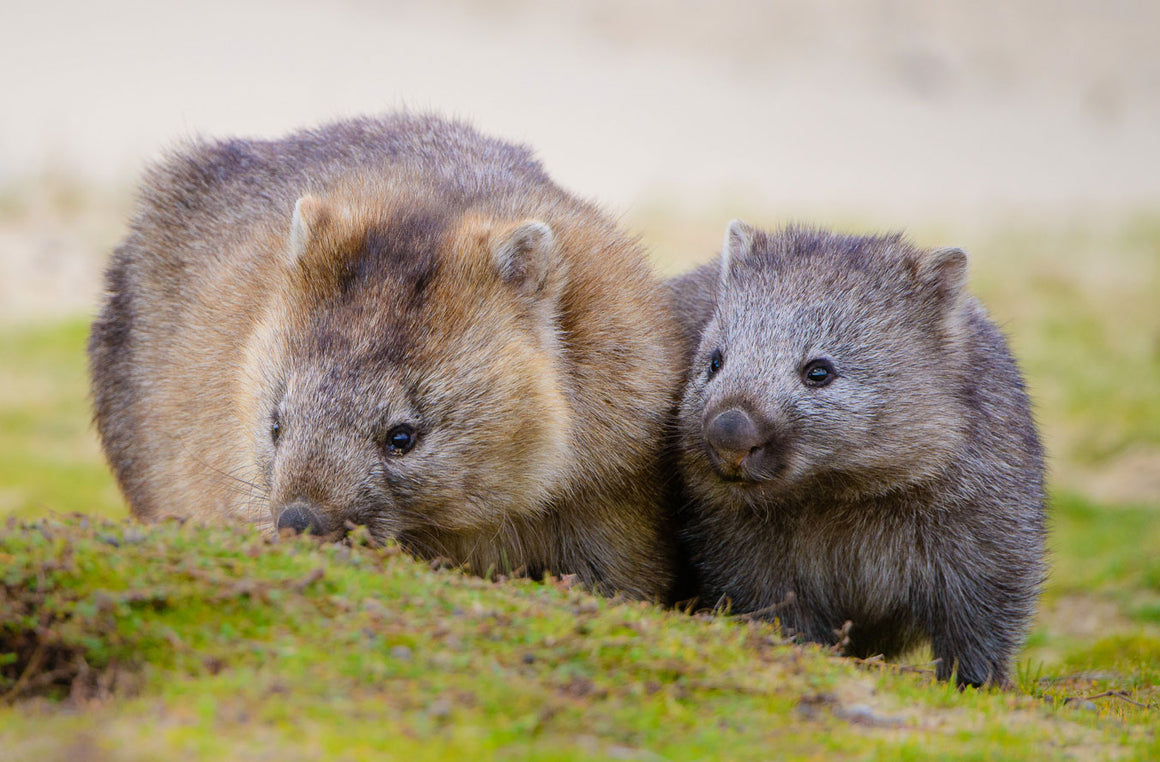Rob Blakers - Ancient Rainforest, McKimmie Creek, takayna
$1,400.00
Part of Wild Island exhibition 'takayna- a Voice for the Forest'
At its western edge takayna/Tarkine is bounded by a windswept coastline and a wild ocean that not infrequently heaves up seas of eighteen metres and more. The rocky headlands and shifting dunefields found here hold the echoes of tens of thousands of years of indigenous living. Inland lie the rugged Meredith and Norfolk Ranges and beyond that spreads Australia’s largest temperate rainforest - 180,000 hectares of wild and verdant life.
Within this rainforest is the Wilson River. With Huon pines stretching for over 25 kilometres throughout the catchment it is the most extensive contiguous, intact and unlogged Huon pine forest that remains in Tasmania - and hence the world. These are extraordinary, ancient trees – weathered by floods and time, twisted and gnarled. Through the centuries upper limbs have been colonised by mosses, lichens and ferns – and even other trees! Huon pines here that have been measured at close to 2m diameter are estimated to be 2500 years old. They are the second oldest discrete trees in the world, after the amazing Bristlecone pines.
And it gets better! Groves of pines are thought in many cases to not be multiple trees, but a single or a few distinct entities only. Trees grow and roots swim into soil. From these roots and from fallen trees and limbs other trees begin, and the process continues – indefinitely! The multi-aged off-river groves that Huon pines typically form may have lived and died and kept on living since the end of the last ice age, 10,000 years ago. Here is the mystery and lure of a tree that, theoretically at least, may be immortal.
Extensively historically logged for its highly valued, rot-resistant, fragrant timber, Huon pine has been subject to dramatic disturbance. Although widespread as a species, about 90% of all stands of Huon pine have been disturbed to some extent by logging, and more by historical mining and fire. Fortunately the Wilson River has largely escaped this anthropogenic onslaught.
However, just four per-cent of takayna is protected as national park and the Mining Exploration Licence Area of Perth-based mining company Venture Minerals, along with over twenty drill sites, covers much of the incredible Wilson catchment, including most of the wild Harman River and the dramatic Harman Falls. Lush Huon pine forests grow at prospective mine locations. Venture Mineral’s mining plans would bring holes in mountains, tailings dams and rock dumps, major haulage roads, mine infrastructure, access for Huon pine poachers, weeds, loss of wilderness, toxic run-off and a massively increased risk of fire to this wild and remote rainforested valley. The most extensive intact Huon pine catchment that remains on the planet would become a privatised industrial zone.
But the underlying problem comes before that. State and federal governments literally do not see any value, intrinsic or otherwise, in these ancient forests. Until a species or community is imperilled almost to the point of extinction Australia’s key environmental legislation is indifferent to its wellbeing. And so no costs are applied for the privilege of the absolute ruination of wild nature at McKimmie Creek and at the Wilson River. For Venture Minerals, the rainforest is free, to do with what they please. And so they do.
Even beyond deliberate destruction, the drying seasons of climate change, and climate change induced fires, have the potential to devastate Huon pines, as evinced by extreme seasons and wildfires arising from unprecedented and exponentially increasing dry lightning strikes in western Tasmania. The future of the relatively few intact pine communities that remain, even although most Huon pines are now ostensibly protected within the Tasmanian Wilderness World Heritage Area, is far from assured.
How best do we protect this place, and places like it – how can we be a voice for wild nature? And how can we be more than a voice - how can we be hands that will join to defend these places, to repel ignorance and greed?
Einstein said that we use just 10% of our human capacity – if we can take the inspiration of these places, to turn ourselves to resolutely face the cascading crises of self-interest and environmental collapse, the other 90% beckons. We need every shred of love, inspiration, creativity, courage, connection, high-level skill and even deeper-level thinking to have a chance at a future for sublime wild nature - and for everything else besides.
Available on paper or canvas:
- Printed with pigment ink on Canson Platine Fibre Rag, 100% Cotton Rag archival paper.
- Archival inkjet print on premium quality canvas.
Please note; Prints are made to order. Please allow 10-15 business days for your delivery.
Rob Blakers has photographed in the wild places of Tasmania for over 40 years. His interests lie in landscape, environmental conservation and the evolution of photographic methods and values in the age of digital technology.


